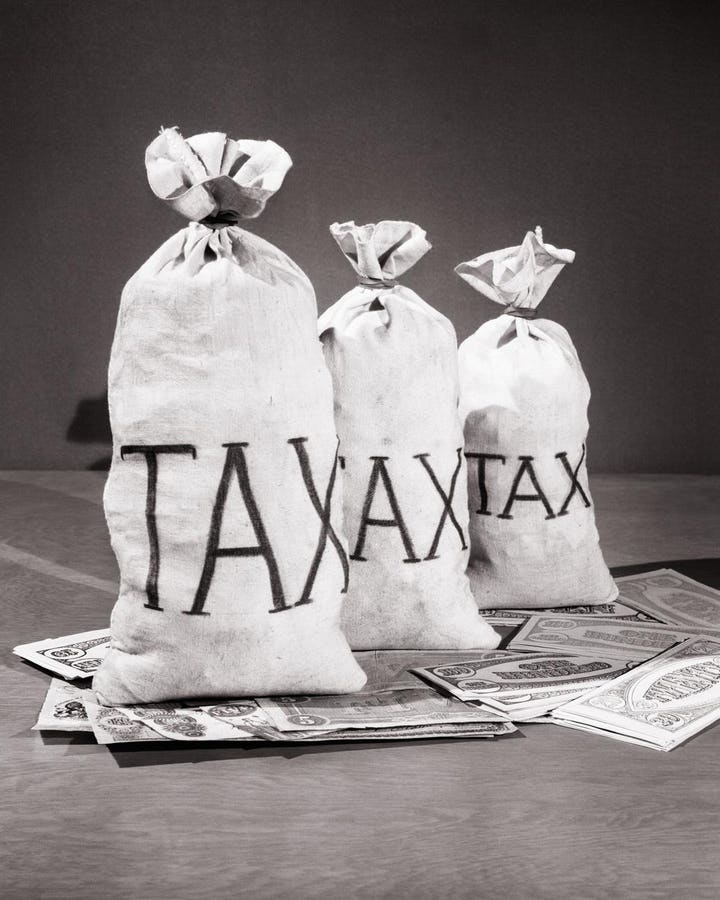There are many tax and estate planning transactions for clients to consider nowadays. While most U.S. citizen clients will only need the basic estate plan, which generally includes a Revocable Living Trust, Last Will & Testament, Health Care Power of Attorney & Living Will, and General Durable Power of Attorney, some clients may wish to explore additional more advanced estate planning transactions. One such advanced estate planning transaction is known as the Optimized Charitable Lead Annuity Trust (“OCLAT”), which is a highly technical and advanced version of the charitable lead annuity trust that the IRS has published in Rev. Proc. 2007-45 and Rev. Proc. 2007-46.
To learn more about the OCLAT, this Forbes contributor has reached out to an industry leader Jonathon Morrison, Senior Partner at Frazer, Ryan, Goldberg & Arnold, who has contributed articles to Forbes previously, to enlighten readers and break down a very complex estate planning transaction.
What is the ideal client profile for the OCLAT?
Morrison: The ideal OCLAT client (i) has a high income (or is selling a highly-appreciated asset) and needs a large federal/state tax deduction, (ii) is philanthropic, (iii) has sufficient savings outside the OCLAT, and/or (iv) wants to minimize inheritance taxes paid by children.
Why should a client fund an OCLAT?
Morrison: Upon funding the OCLAT, you enjoy 3 main benefits: (i) you receive a federal and state income tax deduction, (ii) the OCLAT assets are removed from your estate (the OCLAT is immediately exempt from the 40% gift/inheritance tax), and (iii) the OCLAT assets are exempt from your personal creditors, lawsuits and bankruptcy.
How does this work?
Morrison: You open a new investment account in the name of the OCLAT and put assets equal to your desired tax deduction amount into the OCLAT. You select an initial charitable term (also known as the “charitable Lock-Up Period”) for a term of years (typically 20-30 years). During the charitable term, you continue to control the investments of the OCLAT assets, but each year you must donate a portion of the OCLAT assets to charities pursuant to a fixed schedule. After the charitable period is over, there should be assets inside the OCLAT account equal to 2-5 times the amount of your initial contribution (assuming reasonable 6-8% investment rates of return). These assets can be either (i) returned to you (without income taxes), or (ii) gifted to your children or other family members, including in continuing trusts that you still control (without income taxes and without the 40% federal gift/inheritance tax).
Can you provide a simple example?
Morrison: Suppose in August 2024, you transfer stocks worth $1M into an OCLAT account. You enjoy a $1M federal and state deduction, saving you ~$500k in taxes. Assuming you select a 30-year charitable term, (i) you would be required to donate ~$3M from the OCLAT to your preferred charities during the 30-year charitable term, and (ii) there would be ~$5M left in the OCLAT account at year 30 to either return back to you (without income taxes) or to transfer to your children or other heirs (without income taxes and without the 40% federal gift/inheritance tax). (This assumes an 8% rate of return on the investments which is typical given a 30-year investment horizon.)
Is this what is generally called the “1-3-5” Rule?
Morrison: Yes – it’s an easy rule to held conceptualize the OCLAT – for every $1M contributed, there is a $1M tax deduction, ~$3M to charity, and we expect ~$5M returned to you at year 30. (This assumes an 8% rate of return on the investments.)
This kind of sounds like a retirement account with a charitable component – is this better than someone’s 401(k)?
Morrison: You should still fund your other retirement accounts (IRA; 401(k); profit sharing plan). The problem is the funding limit: you can only move ~$60,000 per year into those vehicles. The OCLAT, on the other hand, can be funded with 30% of your annual income, regardless of how much you make. Another major advantage of the OCLAT is that, unlike your other retirement plans, there are no income taxes or gift/estate taxes when the OCLAT assets are paid out at the end of the charitable term. Your retirement assets, on the other hand, are subject to 40-50% ordinary income tax upon withdrawal and the 40% estate tax upon death – effectively, a ~70% tax.
This seems too good to be true, what’s the catch?
Morrison: There’s no magic. The OCLAT simply leverages the relatively low IRS-set charitable hurdle rate (5.2% in August 2024) which is locked in at funding and fixes the charity’s payments. If the OCLAT investments do not outperform the IRS hurdle rate, all will go to charity and there will be nothing in the OCLAT returned to you at the end of the charitable term. The IRS basically says “we don’t think your OCLAT investments will outperform 5.2% per year, and if they do, you can keep the excess.” Note that if the IRS hurdle rate decreases in the next couple of years (which is expected at some point if the Federal Reserve starts to cut rates), the OCLAT will become even more attractive.
Why shouldn’t someone fund an OCLAT?
Morrison: The OCLAT is not a good fit if (i) you are not charitable, or (ii) you do not have sufficient personal assets or savings outside the OCLAT (during the charitable Lock-Up Period, you cannot withdraw or borrow the OCLAT assets).
What is a CLAT? And how is this “optimized”?
Morrison: The charitable lead annuity trust (CLAT) has been in the Tax Code since 1969 and is most famously associated with Jackie Onassis and the Kennedy family. Over the past 50 years, favorable IRS rulings and regulations have allowed us to make the CLAT much more attractive. There are many ways to structure a CLAT, but the “optimized” version stretches the “CLAT chassis” as far as IRS case law allows to maximize the tax and financial benefits enjoyed by the contributor and minimize the charitable component. Mathematically and legally, there is no better way to structure a CLAT to “squeeze” out any more performance within IRS-approved case law and guidelines; hence, this CLAT variant is optimized.
Is the OCLAT approved by the Tax Code?
Morrison: Yes. The CLAT has been in the Tax Code since 1969. In fact, the IRS published a basic CLAT legal form in 2007, and former IRS Commissioner John Koskinen set up a CLAT for Duke University that was quite similar to this vehicle. The “Optimized CLAT” is a special variant of a CLAT and all aspects are firmly-supported by the Tax Code, Treasury Regulations and/or IRS rulings.
Is this a peer-reviewed strategy?
Morrison: Yes. As part of the publishing process for the Estate Planning Journal article, there was a lengthy 6-month peer-review process. The OCLAT strategy and legal citations were painstakingly critiqued by more than a dozen attorneys at JP Morgan Chase and three separate law firms. All attorneys involved unanimously agreed that the OCLAT passes muster.
How much can be put into the OCLAT?
Morrison: The max is 30% of your adjusted gross income (AGI). Suppose you sold your business for $9M and have $1M of wages/bonuses for a total AGI of $10M – you could put $3M into the OCLAT and reduce your taxable income from $10M to $7M.
Does the OCLAT have to be funded with cash?
Morrison: No. Many clients want to preserve their cash, so they will transfer existing stocks/bonds into the OCLAT. This makes it as simple as “moving stocks/bonds from one account to another” to generate a large income tax deduction.
If $1M is put into the OCLAT, does the taxpayer save $1M of taxes?
Morrison: No, it is a $1M tax deduction, not a $1M tax credit. For example, a $1M deduction for a California-based client in the top 50% bracket (37% federal; 13.3% CA) translates to $500,000 less taxes paid when the tax return is filed next April.
When do the charitable payments from the OCLAT become due?
Morrison: There is a fixed schedule at the time of funding. The IRS has approved the OCLAT’s “backloading” of charitable payments where there are very small charitable payments in the early years which gradually increase, such that approximately 70% of the OCLAT’s charitable giving does not occur until the final 5 years of the term. This is optimal since it gives the OCLAT assets plenty of time to appreciate and make up for any “bad markets” without large charitable amounts required to come out of the account.
The OCLAT is one of many potential advanced estate planning structures for clients to consider, in an area of law that is always evolving and changing in conjunction corresponding tax laws, interest rates, and related factors. While the information contained in this article is from an industry leader on the OCLAT, it is not intended as legal advice or as a substitute for the particularized advice of your own legal counsel. Anyone seeking specific legal advice or assistance should retain an attorney.
Read the full article here










